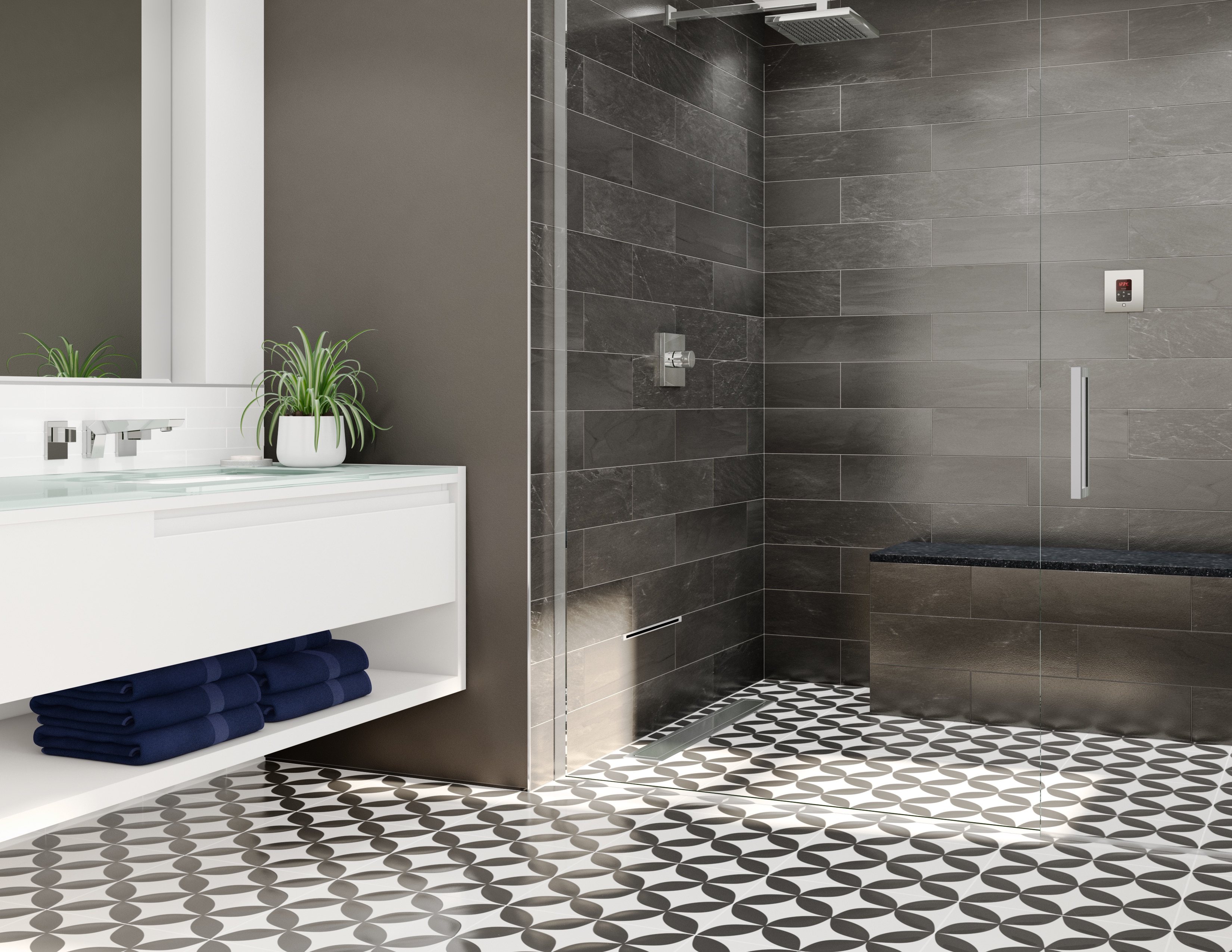3 Ways to Renovate Bathrooms for Longevity
Most houses are built with bathrooms for young, able-bodied families: for example, the common step-over bathtub shower combos installed with a plain shower head. The modern bathroom, however, should be flexible enough to offer a relaxing, practical and safe refuge for a variety of ages, lifestyles and abilities for families with multiple generations under one roof or simply anyone who wishes to age in place.
For this reason, demand for functional remodeling recommendations is growing, especially for the bathroom, which often poses significant risk factors for people with limited mobility. However, with a few considerations, the bathroom can become flexible and functional without sacrificing form.
Whether you’re a contractor with clients interested in making their home last a lifetime or a homeowner planning future updates, consider the following three remodeling ideas for a more comfortable, luxurious bathroom.
Consider a walk-in shower with steam.
Tub combinations and step-over curbs in the shower increase the opportunity for falls. Luckily, curbless showers are both a forward-thinking and high-design method of reducing risk and creating a more beautiful bathroom.
Whether your customer is an athlete or living with mobility issues, soaking tubs could be hard to give up. As a safer — and space-saving — alternative, consider installing a steam shower system into the curbless shower. Steam has been shown to provide relief of muscular aches and pains, alleviate joint discomfort and improve sleep. And since it’s installed inside the wall, in a closet, under a vanity or in an attic, it doesn’t take up space or create a tripping hazard.
Think your bathroom is too small?
Discover how this designer made a steam shower installation work here.
In addition to the walk-in feature, consider recommending slip-resistant floors in the bathroom and shower, such as a natural stone tile, which is both beautiful and safe. Finding options in bright, light colors can help the space appear larger as well. For customers who seek a more luxurious, spa-like atmosphere, offer them the possibility of the iDream™ Steam Shower Package, which includes aromatherapy, ChromaTherapy lighting and an integrated audio system with Bluetooth® connectivity for an elevated shower experience.
Install more functional fixtures.
Generic bathroom design doesn’t account for changing needs, but there are easy fixes for fixtures such as showerheads, controls and safety measures that won’t compromise the aesthetic of the bathroom. For example, consider either replacing the overhead showerhead with a handheld option or just adding the handheld as an addition to allow more flexibility, such as showering from a seated position or targeting different areas of the body without stretching or bending.
Additionally, investigate moving the shower controls closer to the stall entrance, which allows someone to set them without getting wet or encountering a slippery surface before they’re ready. While they have a reputation for providing a less-than-pleasing look, grab bars, particularly helpful in the shower and near the toilet, are being released in more visually appealing designs, including matte or brushed finishes, a variety of colors and unique shapes. Including grab bars near the toilet and in the shower. You can also suggest reinforcing matching towel bars that can serve as additional grab bars as well.
Keep essential items midline.
An inconspicuous method for designing a more limited mobility–friendly bathroom without compromising design or space is adjusting heights of each fixture. For example, installing a taller toilet can ease sitting down and standing up. Additionally, installing a non-slam, slow-close seat and lid will make the act of adjusting both easier to do. If the room is small, consider installing a wall-hung toilet, which keeps the tank in the wall, to conserve space and make the surrounding floors easier to clean.
Raising electrical outlets and lowering light switches can also aid in accessibility. Look for opportunities to bring items to an easy-reach distance to create a safer room.
Renovations May Support Aging In Place.
While most people don’t have the chance to custom build a home, renovations can offer the opportunity to upgrade and enhance bathrooms for aging in place with style and comfort. With careful consideration and planning for certain needs, such improvements will allow your clients, your family or yourself to remain independent and safe longer.

 SEARCH
SEARCH
 FIND A DEALER
FIND A DEALER






